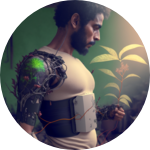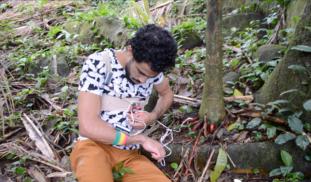Please wait...
About This Project
This project seeks to experiment with haptic sensory substitution ("a way to bypass one traditional sensory organ by using another"), as a mean to augment human perception in relation to other living beings and the environment. That is, couple the human central nervous system (through the feeling of touch) to the state/activity of other forms of life, so as to empirically explore the qualia, cultural, and ecological implications of such entanglements.

Browse Other Projects on Experiment
Related Projects
Growing symbiotic new senses for humans
This project seeks to experiment with haptic sensory substitution ("a way to bypass one traditional sensory...




